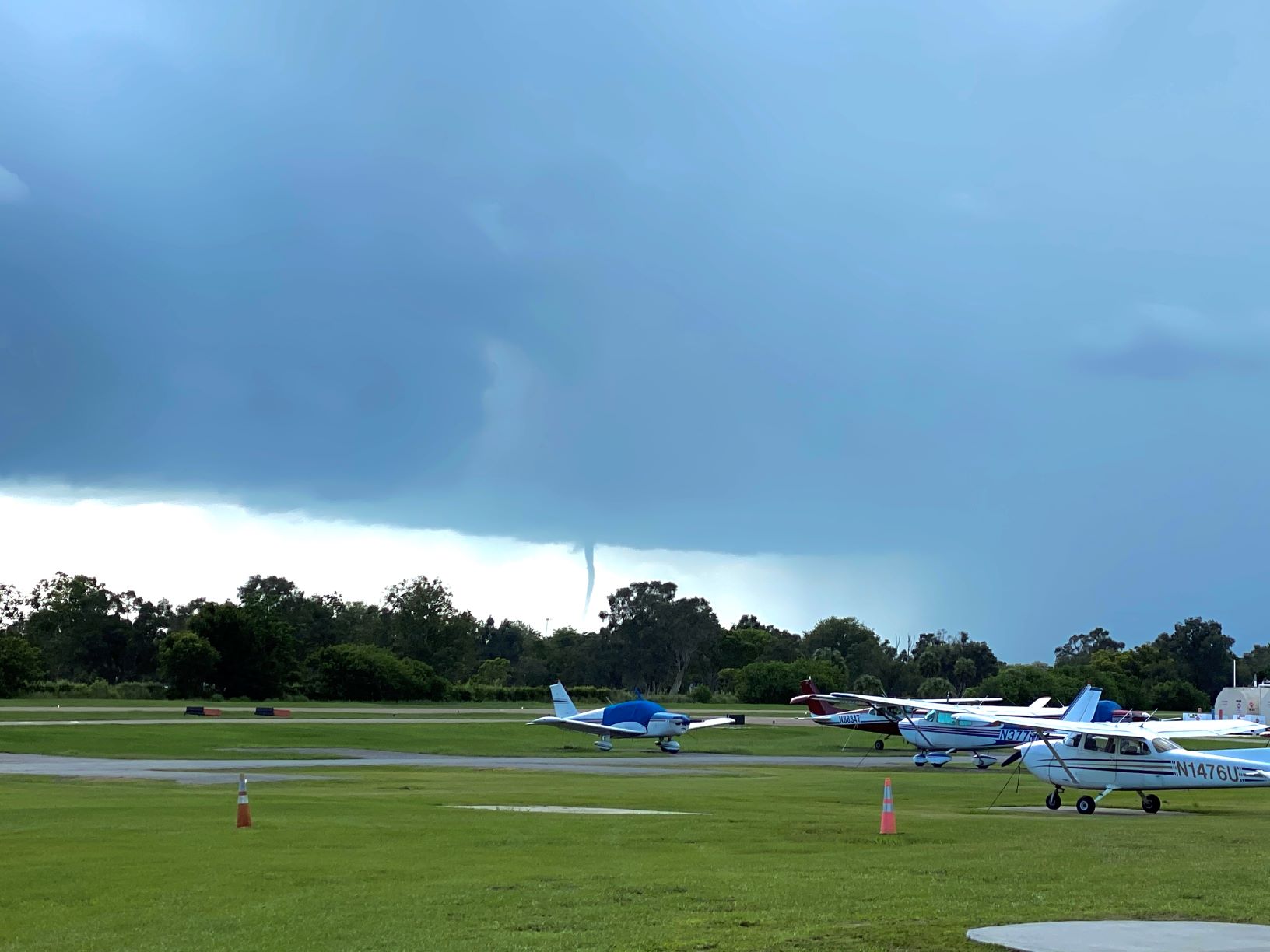We’ve all heard the saying, “When the thunder roars, go indoors” but what happens if you’re flying and a thunderstorm pops-up in your flight path? Below is some helpful information directly from our instructors who have loads of experience flying around Florida thunderstorms, that can help keep you informed, prepared, and safe while flying!
Living in the Tampa Bay region, it’s not uncommon to be inconvenienced by an afternoon storm. The humid, moist summer air makes conditions favorable for storms to pop in the afternoon hours, after the earth has had time to heat up. The three ingredients needed for storms to develop are: an unstable atmosphere, uplifting action, and moisture. Given our geographical location, we almost always have all three ingredients needed for storms. To simplify it- as the hot air rises, that creates an unstable atmosphere, pair that with the moisture from the Gulf or the Caribbean, add the sea breeze, and you’re ready for a storm!
Learning about the weather is a critical part of flight training. Our instructors have been teaching in the Lightning Capital of the U.S. for a while now, so they are very knowledgeable with thunderstorm safety.
Allison makes sure her students know to stay 20 NM (nautical miles) away from storms.
Eddie educates his students about the different stages of a thunderstorm. Knowing the different stages of a storm can help you predict some of the hazards such as a strong downdraft (microburst) or lightning strikes.
Casey teaches her students the different cloud types and characteristics of the weather associated with those clouds. Towering Cumulus (TCU in a METAR) indicates storms so make sure to stay away.
Jason makes sure his students look outside! The storms in the area can be very brief and can build and dissipate very fast. Just because a storm is forecasted, it might dissipate well before your scheduled flight. With that being said- if there is a storm over the field, hold at a safe distance away and wait for the storm to move so you can safely land.
Carlo goes over different weather products available for pilots such as the Radar Summary chart. There are tons of weather products available for pilots that are taken directly from airport’s weather reporting systems, so they are quite accurate.
Mike makes sure his students know how to access weather information in flight through a Flight Service Station or asking for PIREPs (pilot reports) through Air Traffic Control or even an App on your mobile device. He also makes sure his students know how to use radar capabilities on board the aircraft if equipped.
If you need to brush up on your knowledge, we suggest booking a ground with your CFI or surf your favorite online search browser for tons of aviation weather resources!
